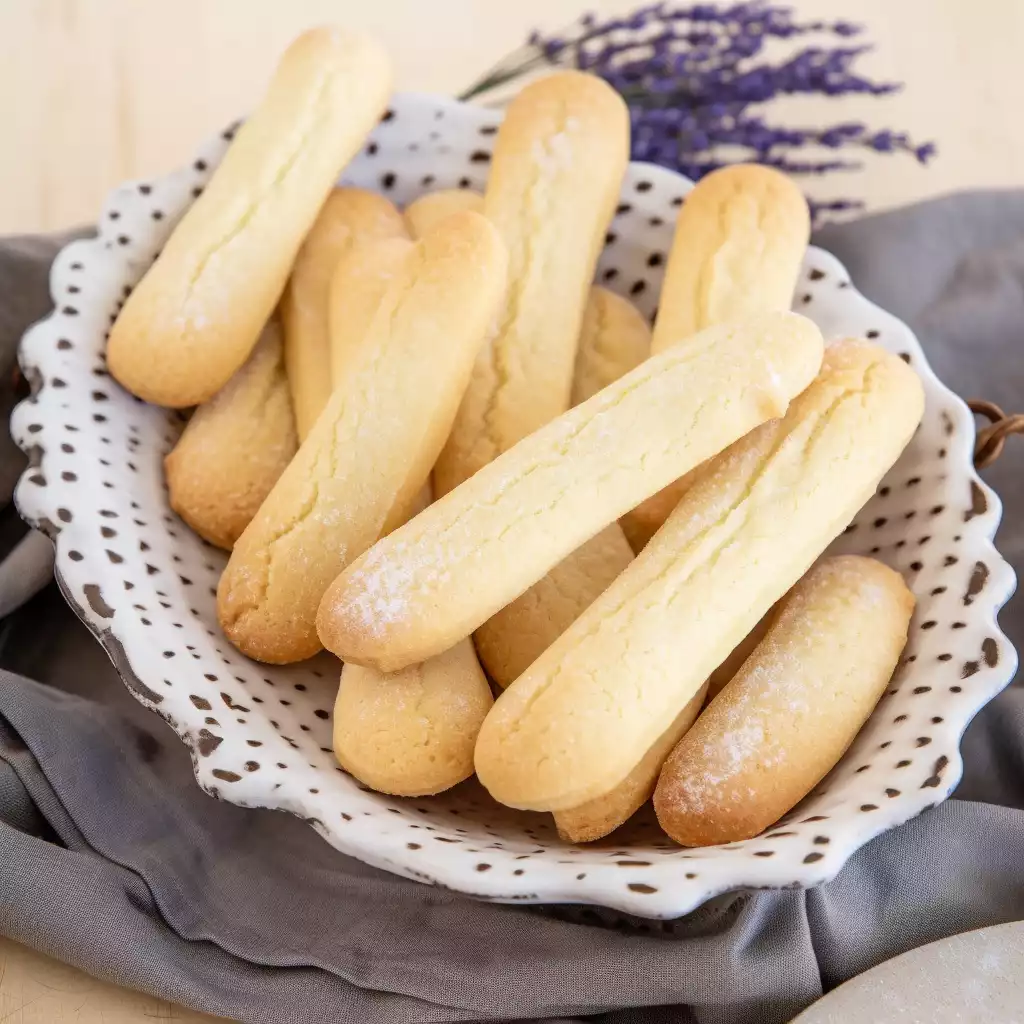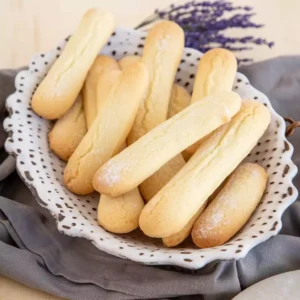
Ladyfingers, delicate and versatile, have a history as rich as their flavor. Originating in Italy, these light and airy treats have been delighting taste buds for centuries.
While often associated with desserts like Tiramisu, making homemade ladyfingers is simpler than you might think. With just a handful of ingredients and a bit of patience, you can create these delightful biscuits right in your own kitchen.
The key to perfect ladyfingers lies in achieving the right balance of ingredients and mastering the technique of piping the batter onto the baking sheets. Don’t let their elegant appearance intimidate you; this recipe is beginner-friendly and sure to impress.
Whether you’re indulging in them on their own or incorporating them into your favorite dessert recipes, homemade ladyfingers are a delightful treat for any occasion.
Expert Tip: Be gentle when folding the flour into the egg mixture to maintain the airy texture of the batter.
Eggs: Eggs provide structure and richness to the ladyfingers, giving them a light and fluffy texture.
Caster Sugar: Caster sugar adds sweetness and helps to aerate the batter, resulting in a delicate crumb.
Vanilla Extract: Vanilla extract enhances the flavor of the ladyfingers, adding a subtle, aromatic sweetness.
Plain Flour: Plain flour is the base of the batter, providing structure and stability.
Salt: A pinch of salt balances the sweetness and enhances the flavor of the other ingredients.
Icing Sugar: Icing sugar is optional for dusting the ladyfingers, adding a decorative touch and a hint of sweetness.
Expert Tip: Ensure the eggs are at room temperature before beginning to achieve maximum volume when whisking with sugar.
Expert Tip: Use a piping bag fitted with a plain round tip for precise shaping of the ladyfingers.
Yes, you can store homemade ladyfingers in an airtight container at room temperature for up to a week.
Yes, you can freeze ladyfingers for up to three months. Thaw them at room temperature before serving.
Yes, you can experiment with different flavor extracts such as almond or lemon for a unique twist.
Ladyfingers should be golden and firm to the touch when done baking.
Yes, the icing sugar is optional and can be omitted if desired.
Here are some more recipes for you to enjoy! If you my recipes don’t forget to rate and leave a comment.
If you have any recipe suggestions, please do not hesitate to ask me. A great way to stay in contact with me is through Instagram, Facebook, Twitter and YouTube. Don’t forget to tag me @CookwithNabeela in your recipe photos!

Subscribe now to receive my latest recipes directly in your inbox. Stay up-to-date and never miss out!

I love to cook! I want to share with you my favourite, delicious family-friendly recipes. I want to inspire you to create fantastic food for your family every day.
Add your first comment to this post